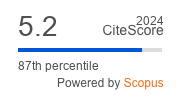Article | Open Access
Commerce and Security Meet in the European Union’s Trade Defence Instruments
| Views: | 3685 | | | Downloads: | 2337 |
Abstract: Mercantilist policies, protectionism, Chinese and US violations of the spirit—if not always the rules—of the World Trade Organization, along with supply chain vulnerabilities, trade wars, and illegal state subsidies have all contributed to a rise in the weaponisation of commerce (using trade in response to, or to achieve, political decisions or acts) across the globe. The weaponisation and geo-politicisation of trade pose a challenge for the EU, which is poorly suited for a game of power politics. Its common commercial policy developed separately from the intergovernmental foreign and security policy. The level of exclusive EU competence differs across the two policy domains, as do decision-making processes. Drawing on work addressing ideational and instrumental levels of policy, we discuss how the EU is assessing the international environment through the ideational framework of strategic autonomy, and how this has shaped the construction of new trade defence instruments intended to protect against economic and technology-related security risks. Focusing specifically on trade defence instruments addressing security concerns, which are justified in the 2023 European Economic Security Strategy (especially in the pillar focusing on protecting against economic security risks), we show that the distinction between commercial policy and traditional security concerns is eroding.
Keywords: economic security strategy; European Union; liberal international order; security; strategic autonomy; trade instruments; trade policy
Published:
Issue:
Vol 11, No 4 (2023): Economic Security and the Politics of Trade and Investment Policy in Europe
© Patricia Garcia-Duran, L. Johan Eliasson, Oriol Costa. This is an open access article distributed under the terms of the Creative Commons Attribution 4.0 license (http://creativecommons.org/licenses/by/4.0), which permits any use, distribution, and reproduction of the work without further permission provided the original author(s) and source are credited.


